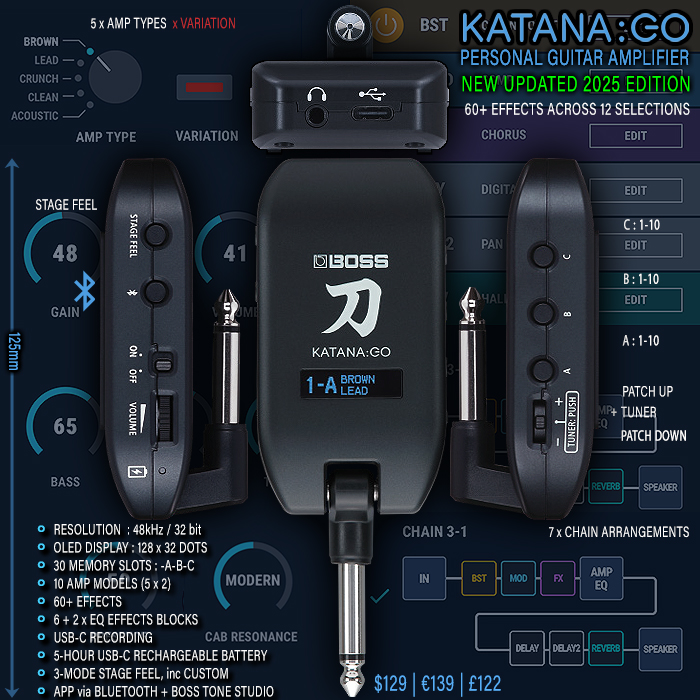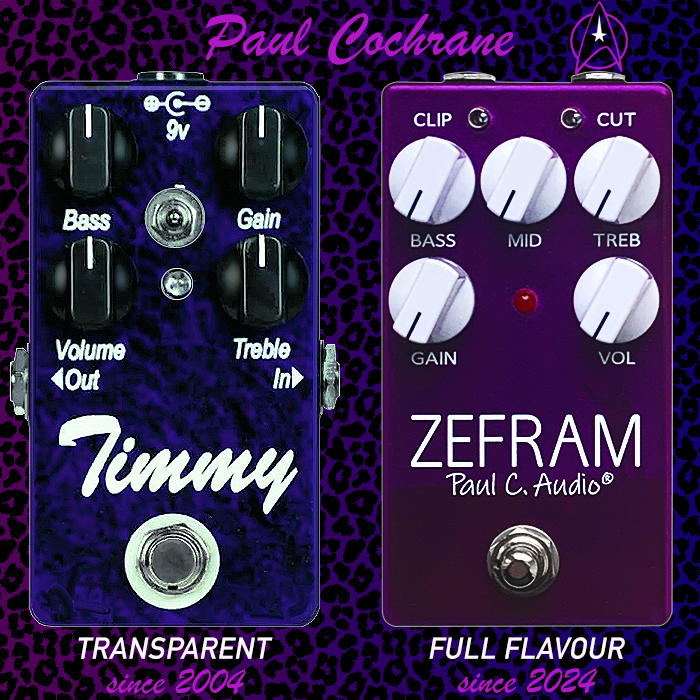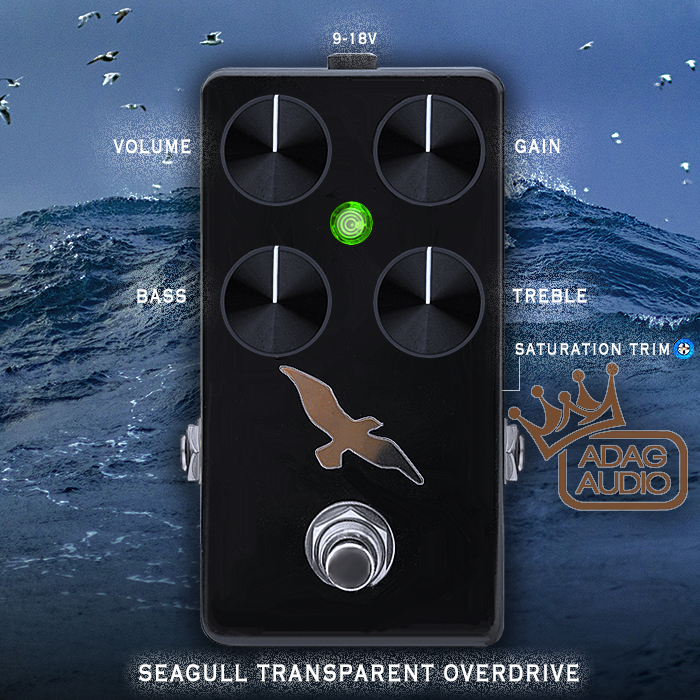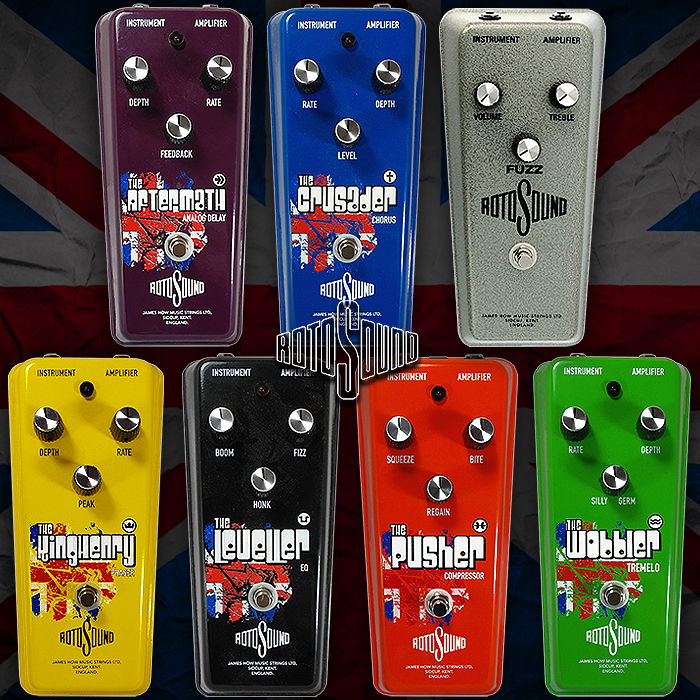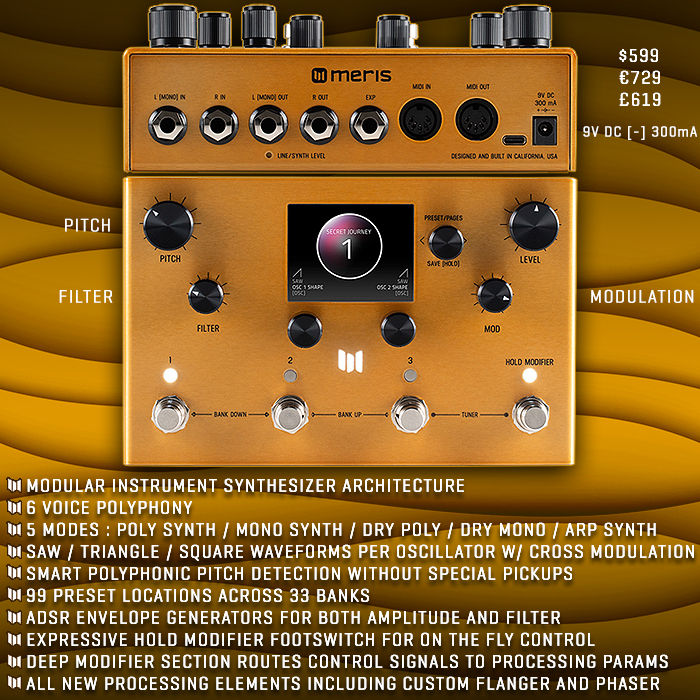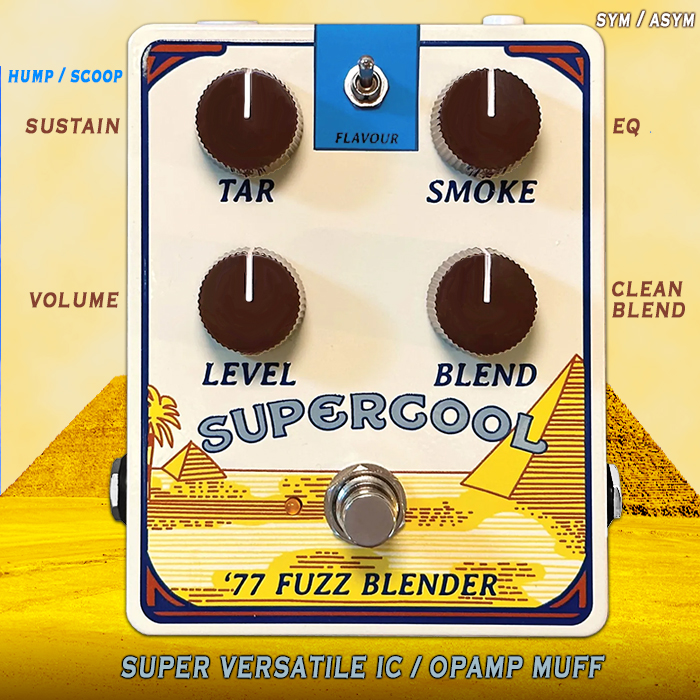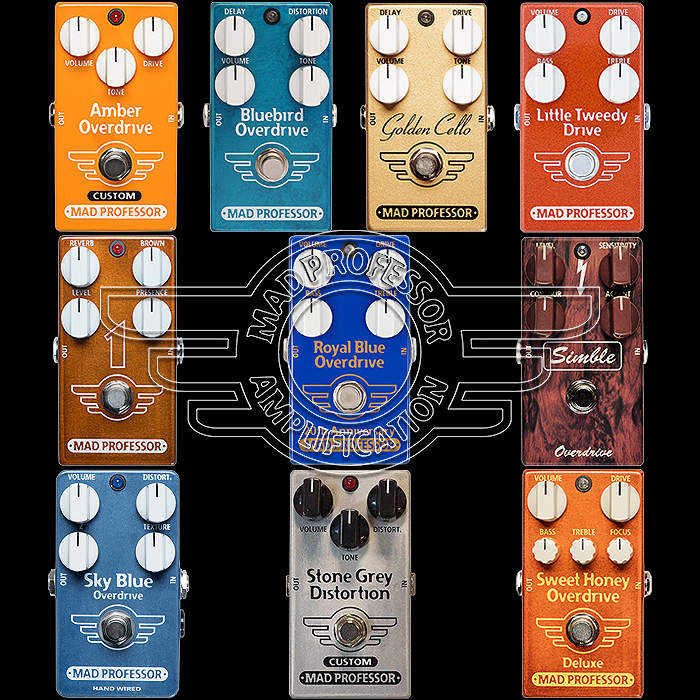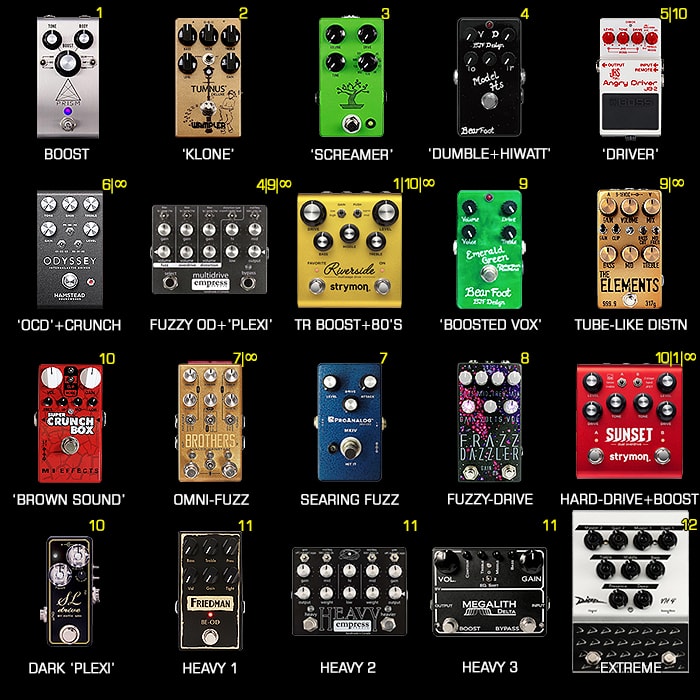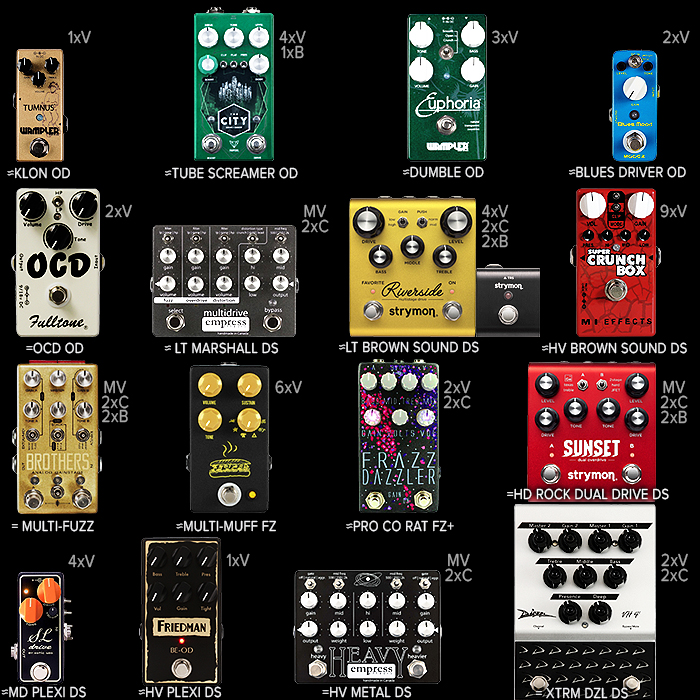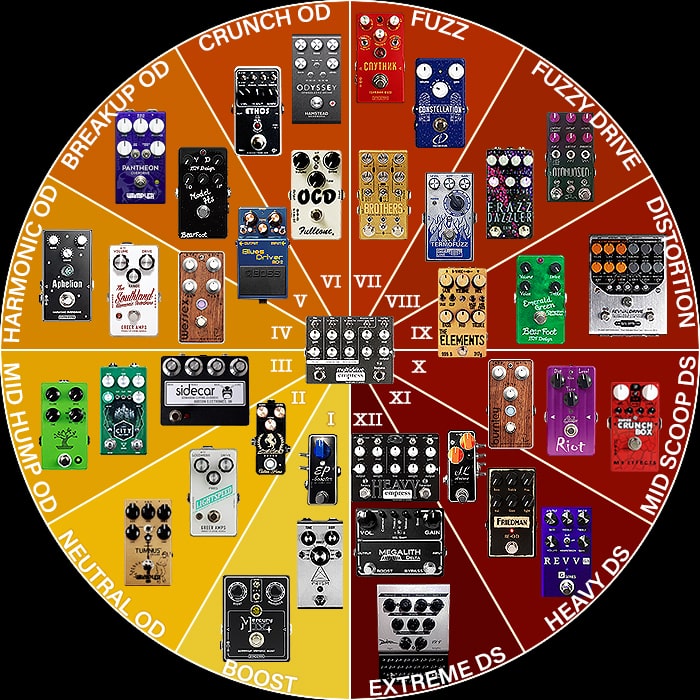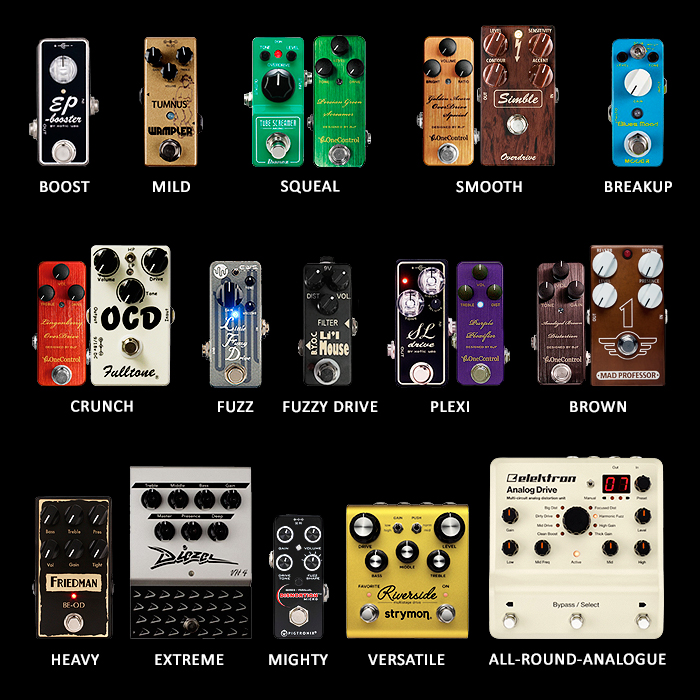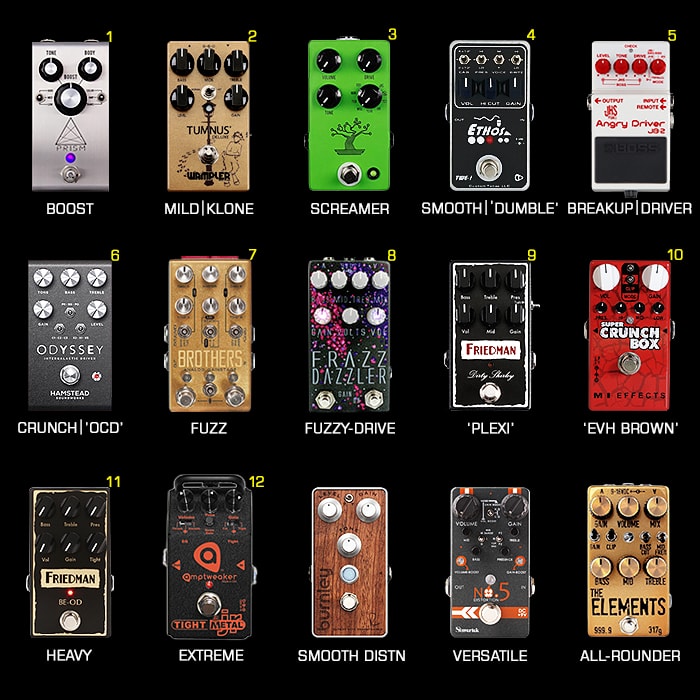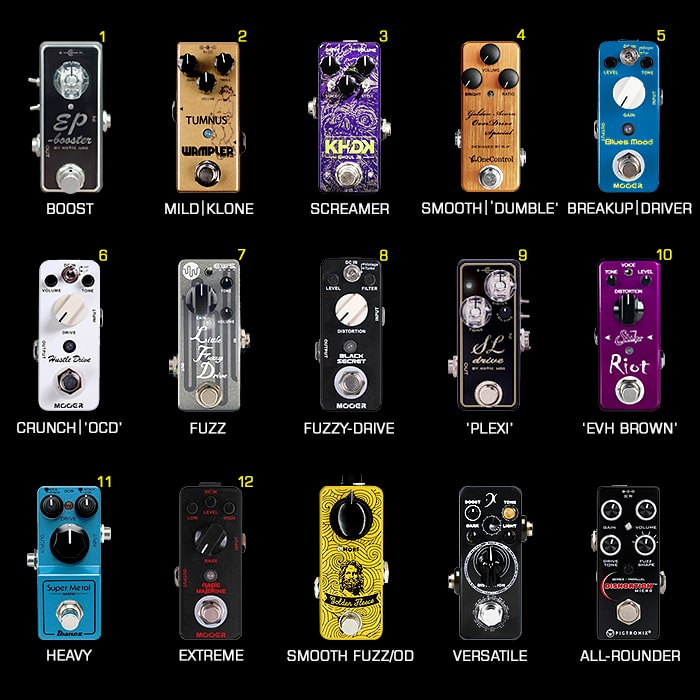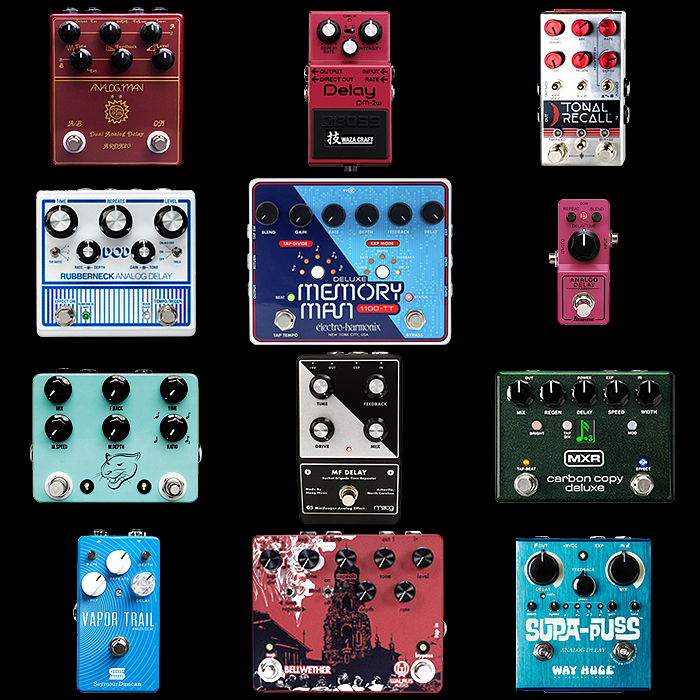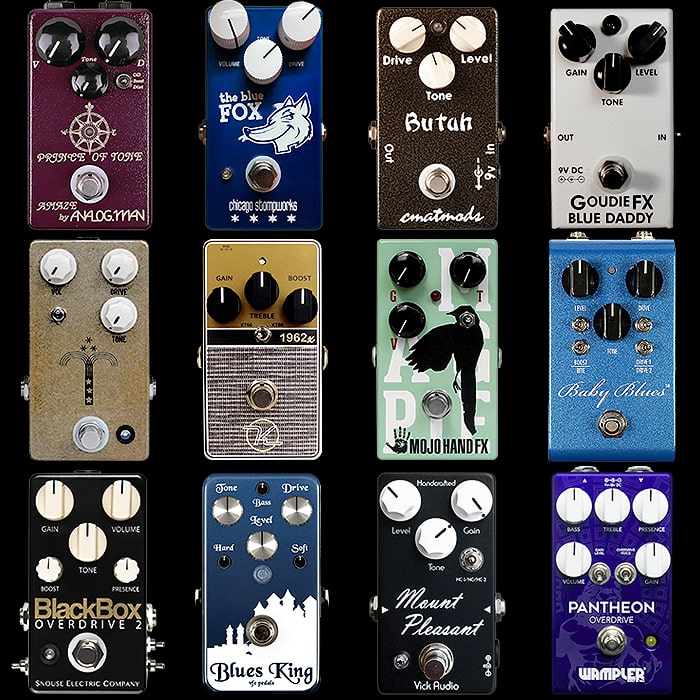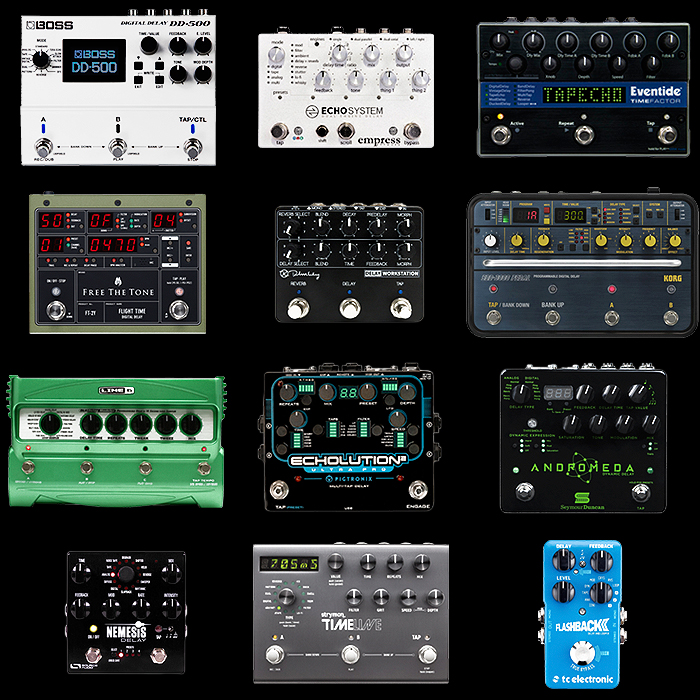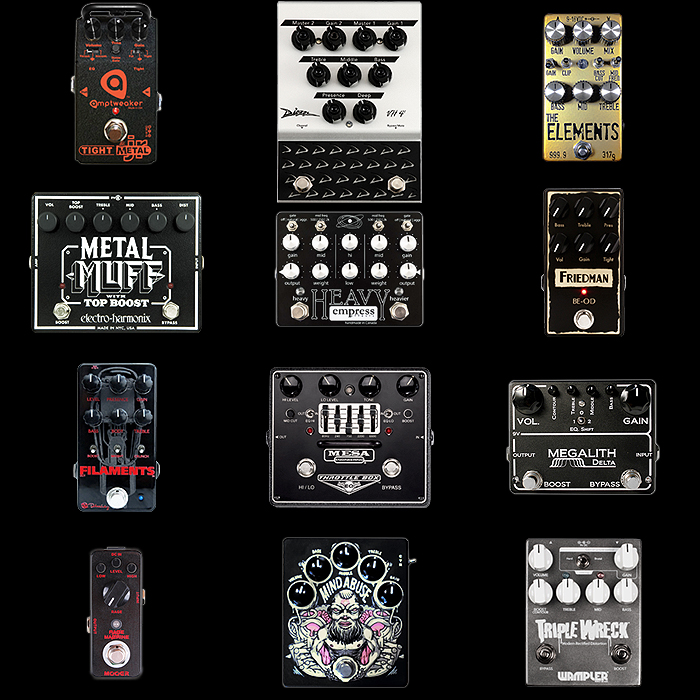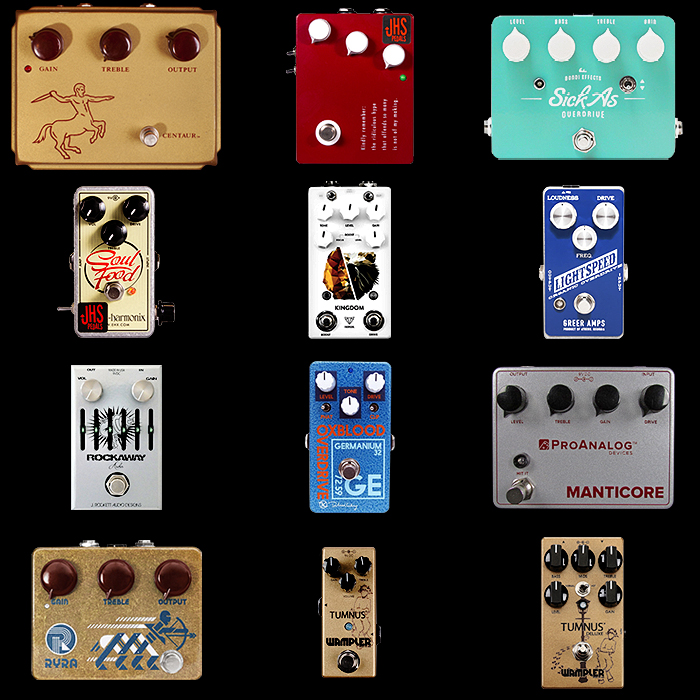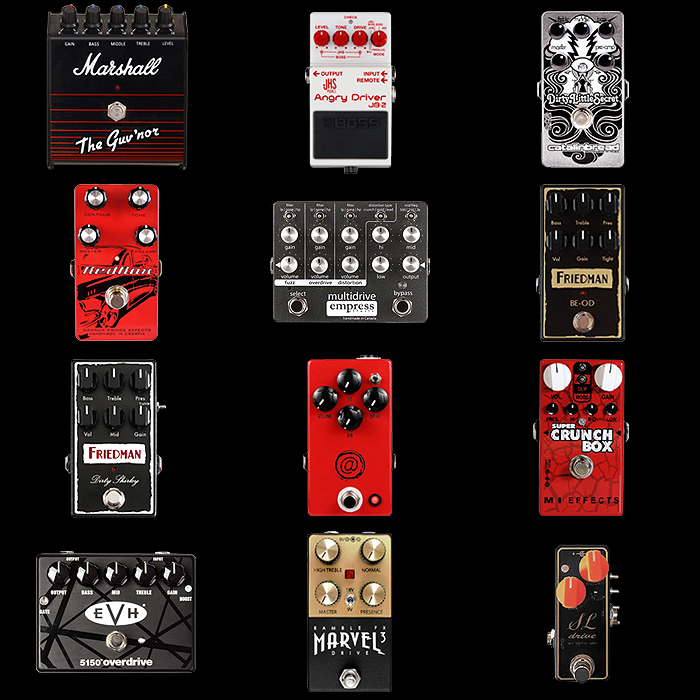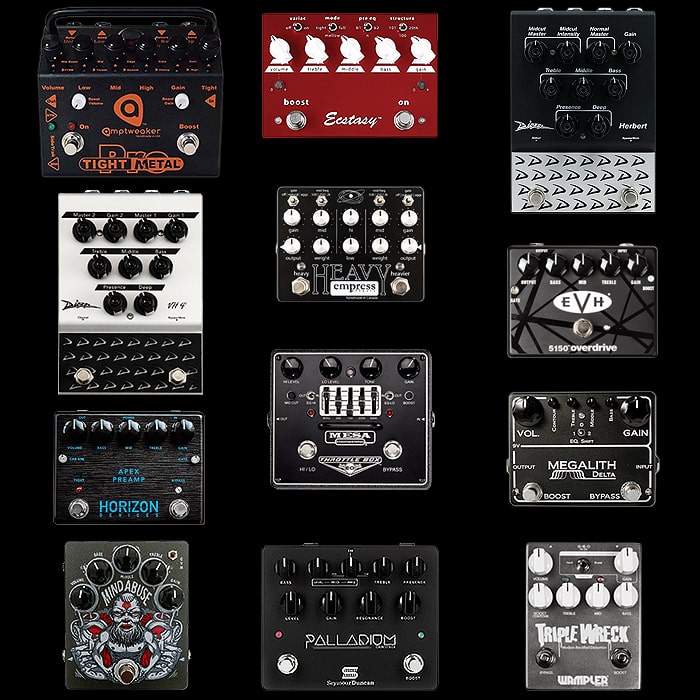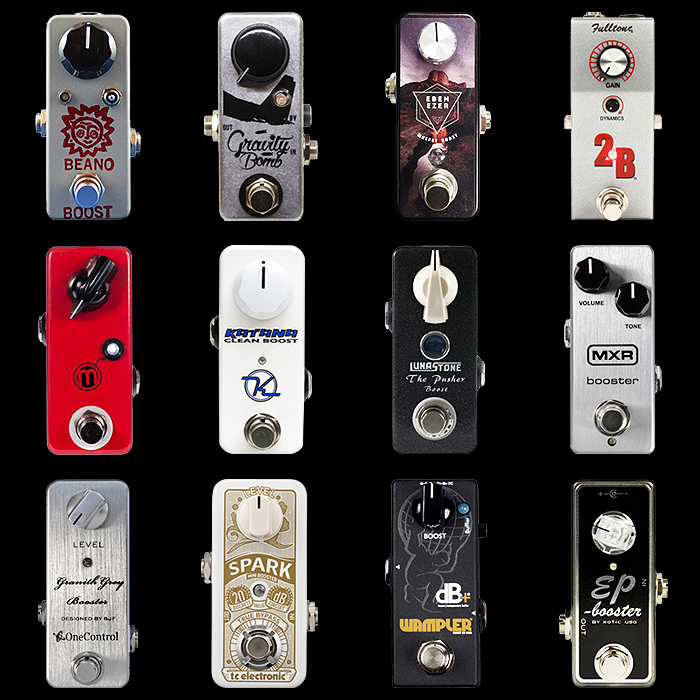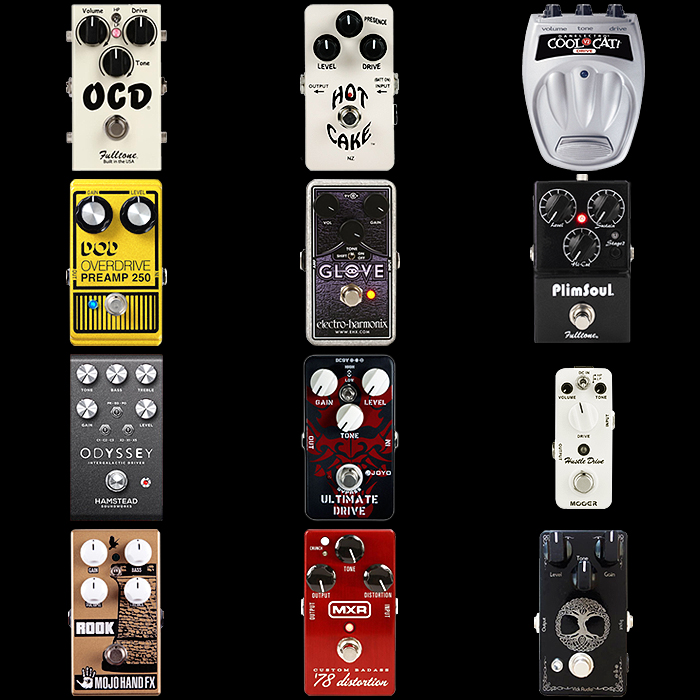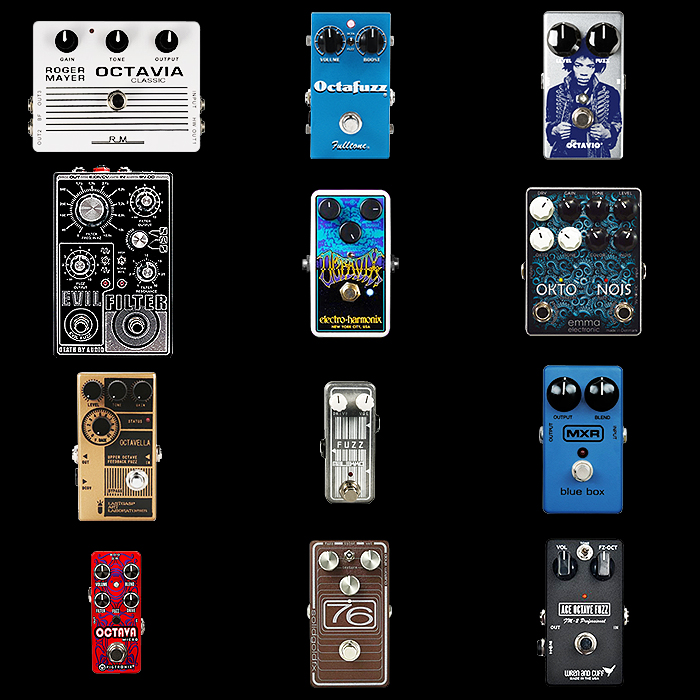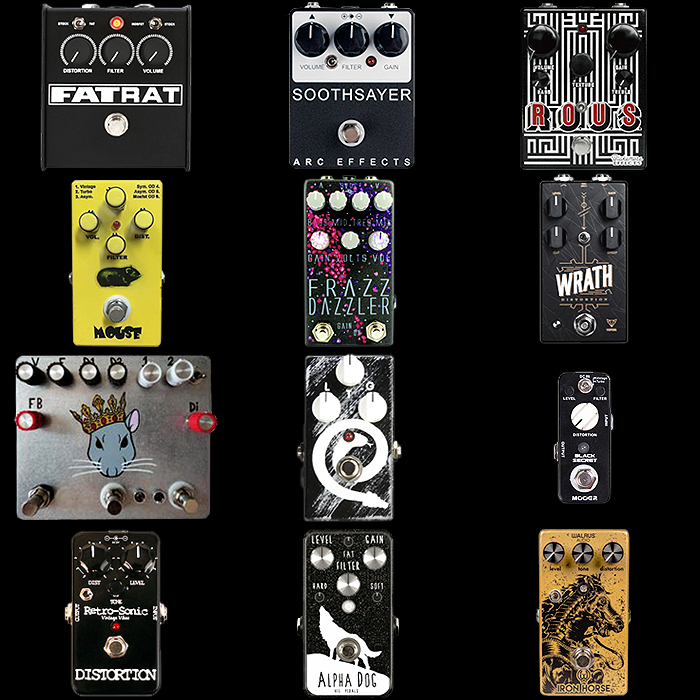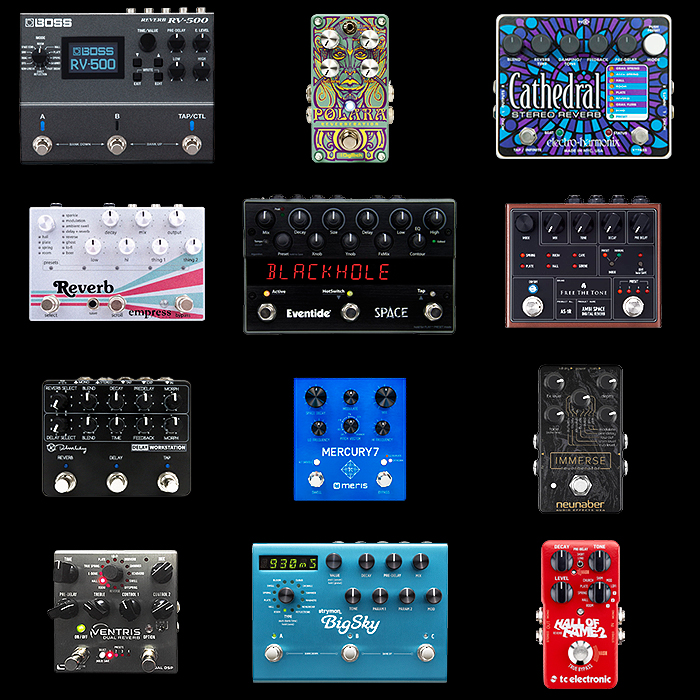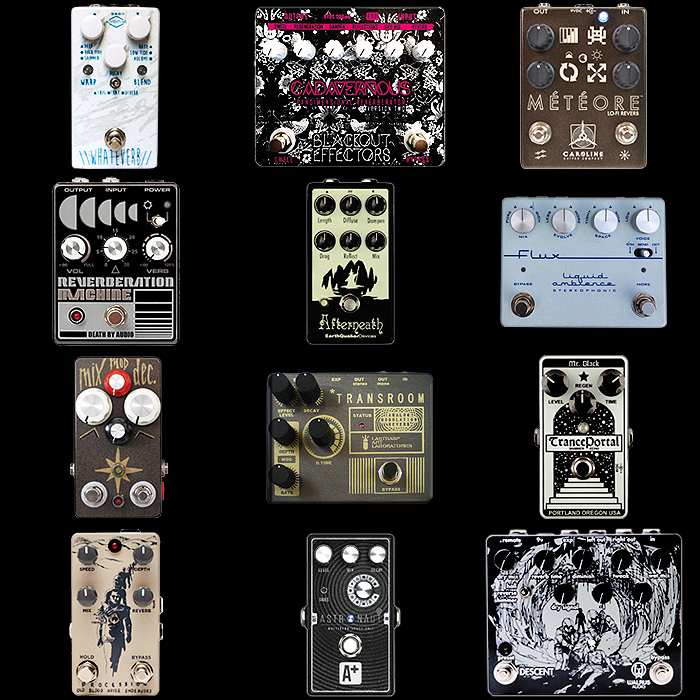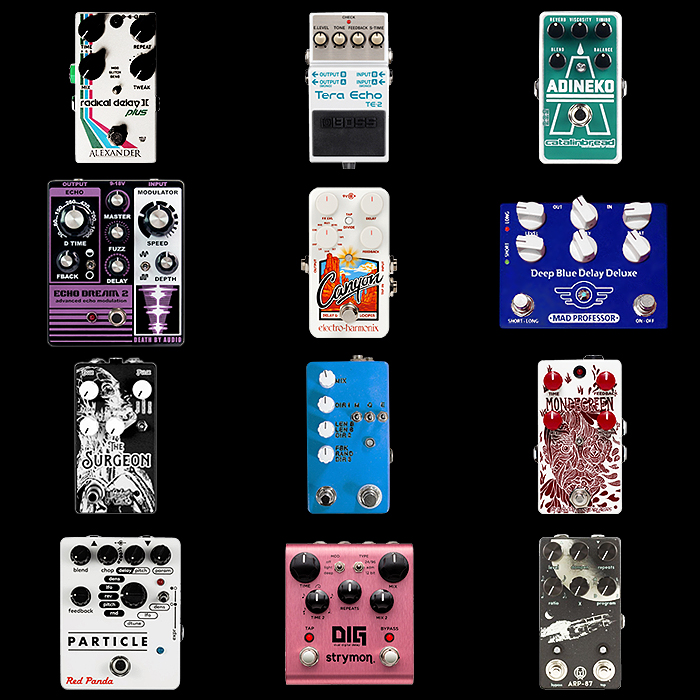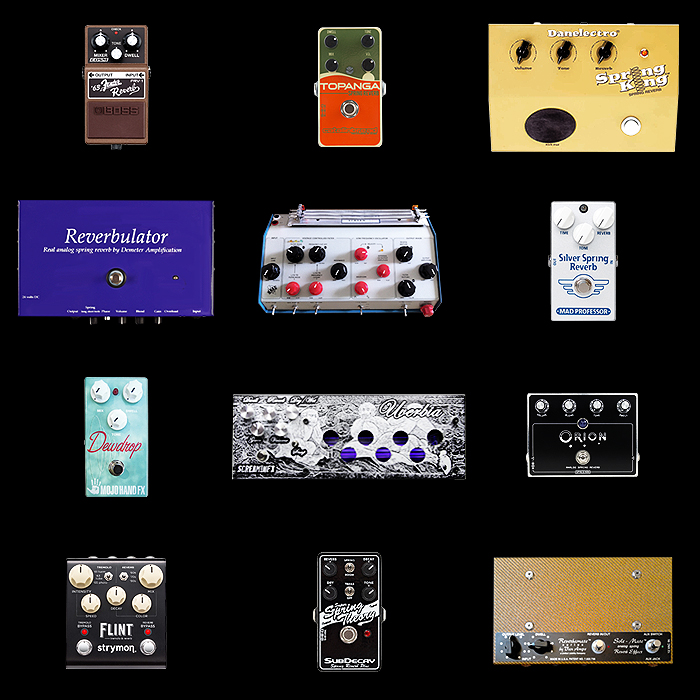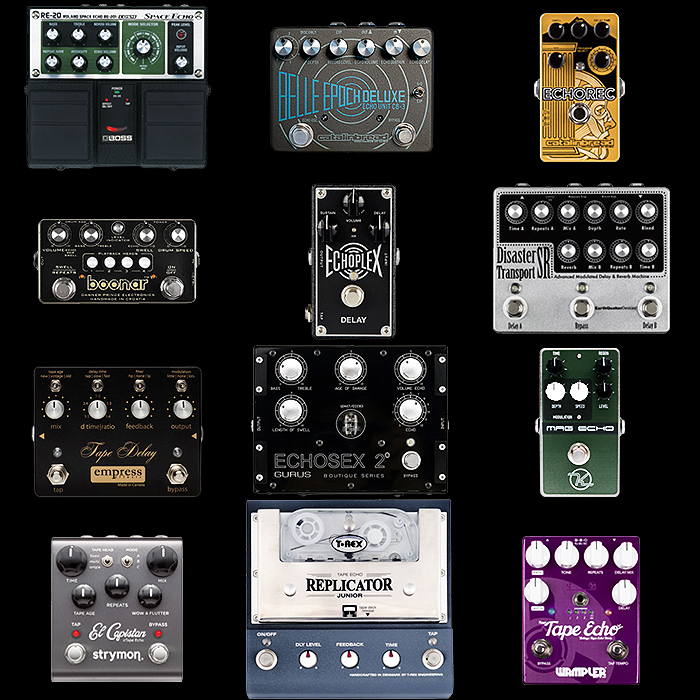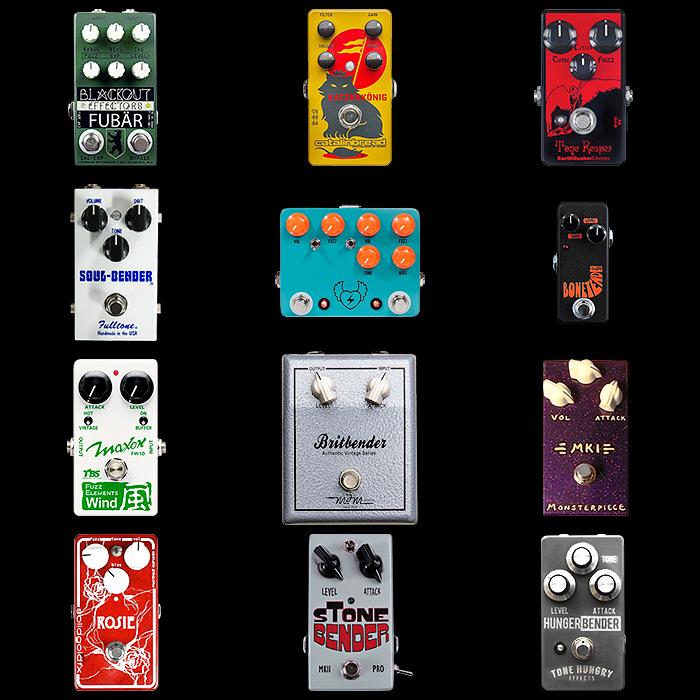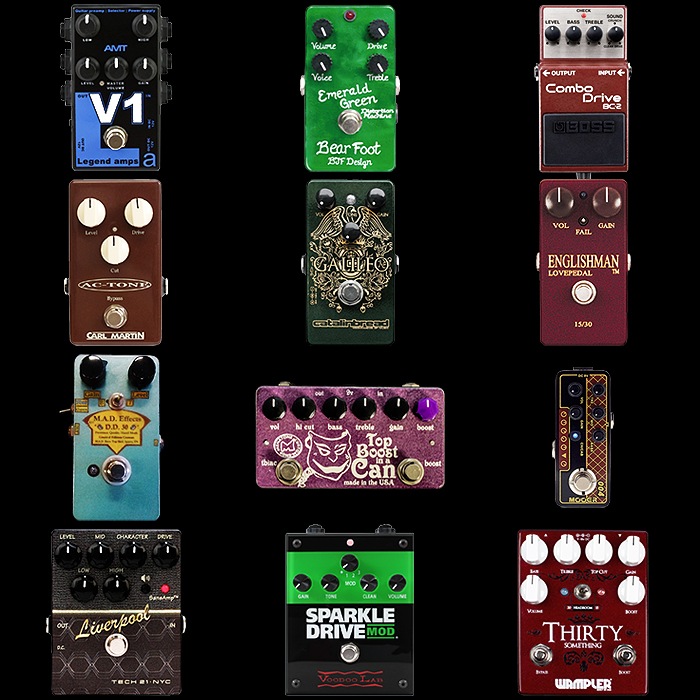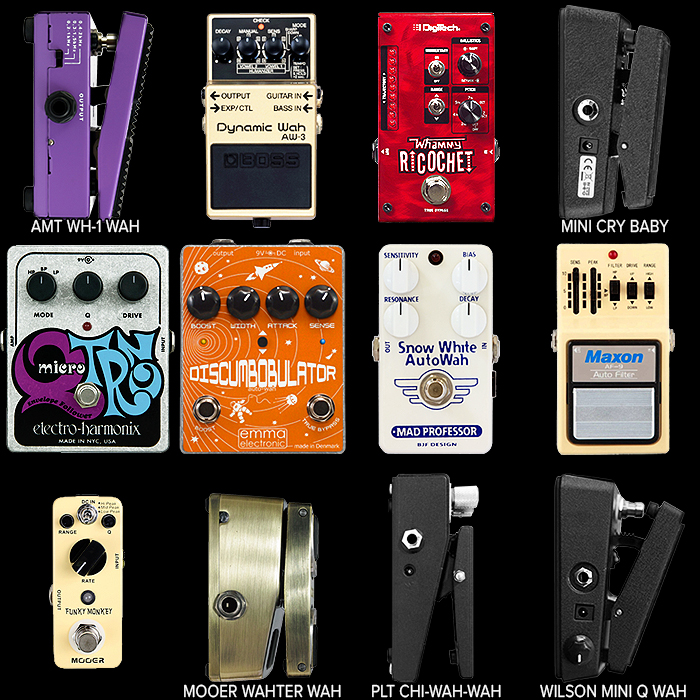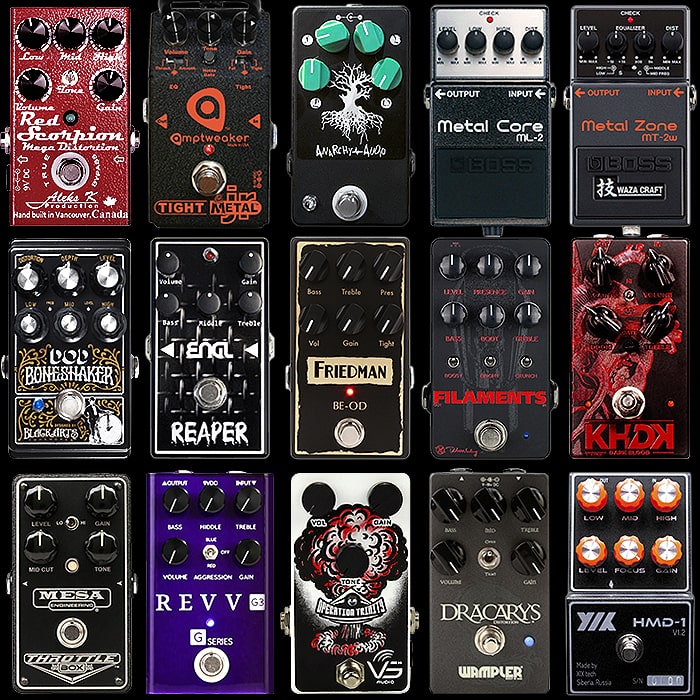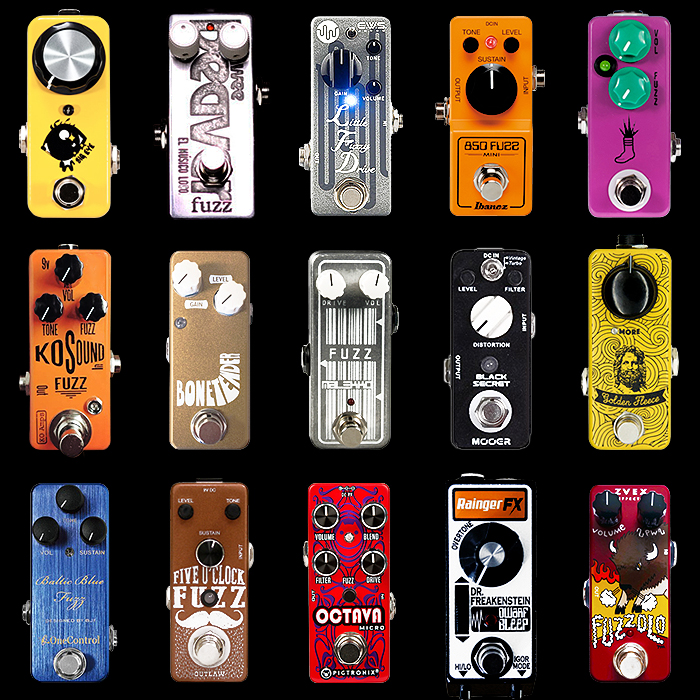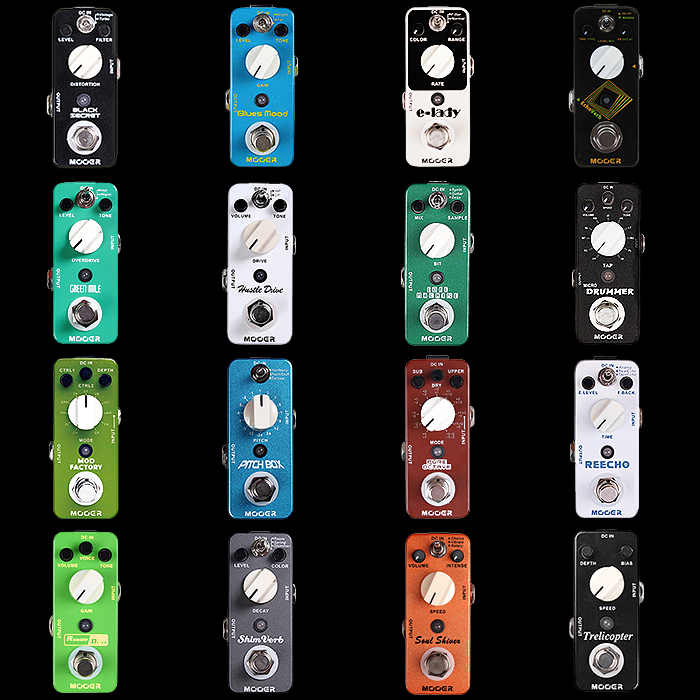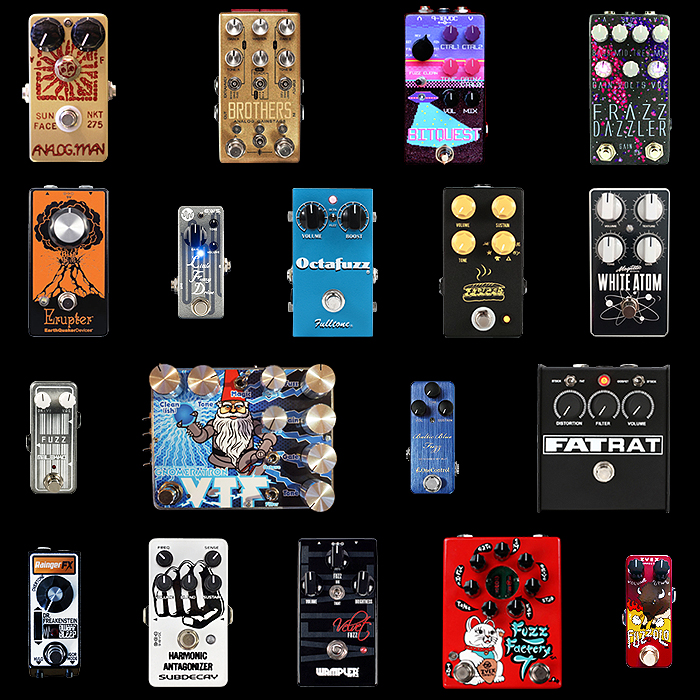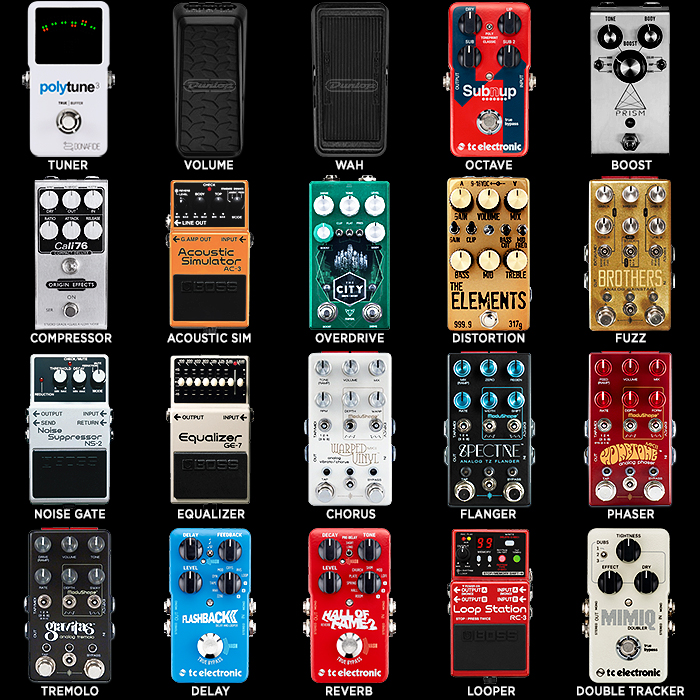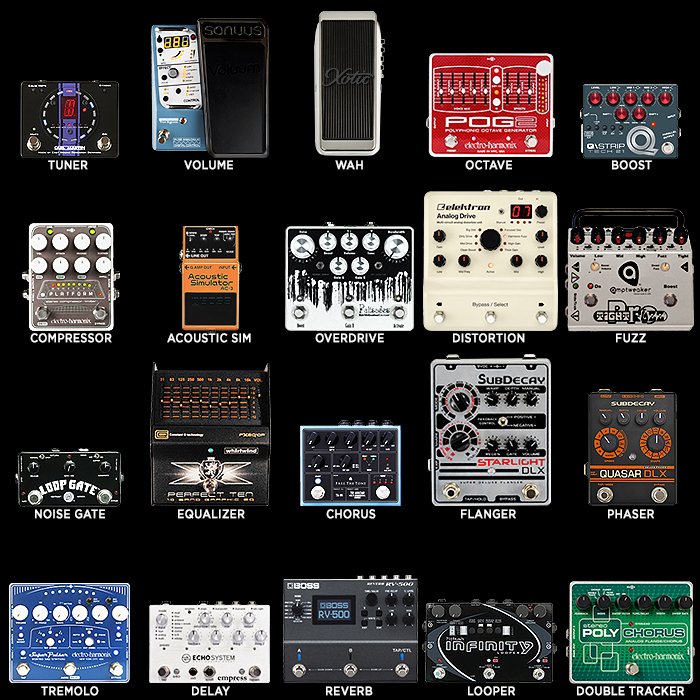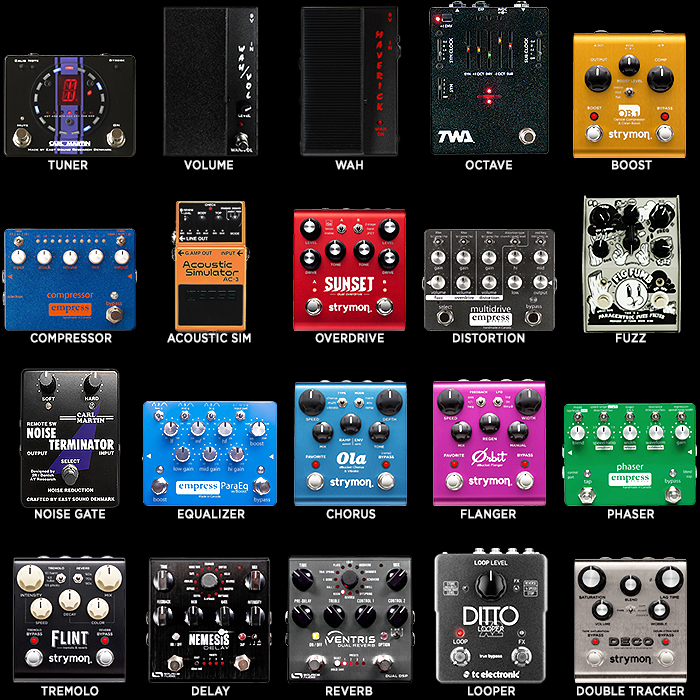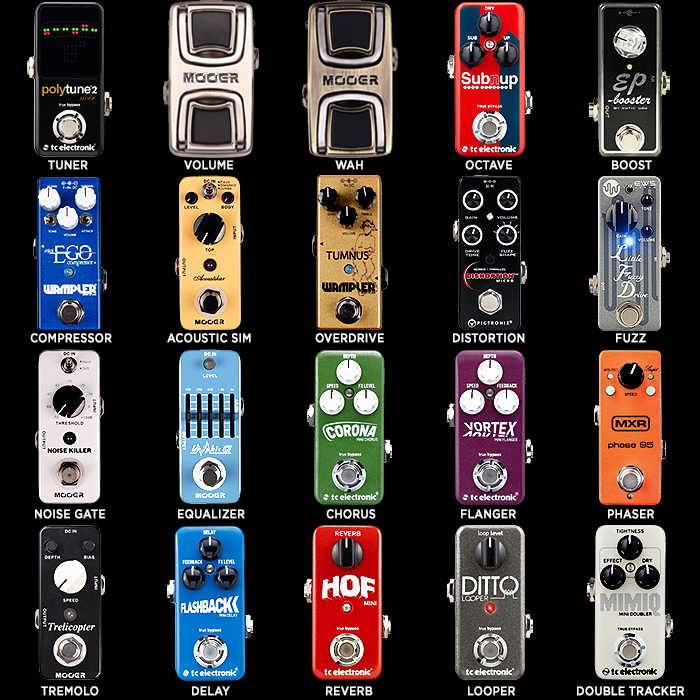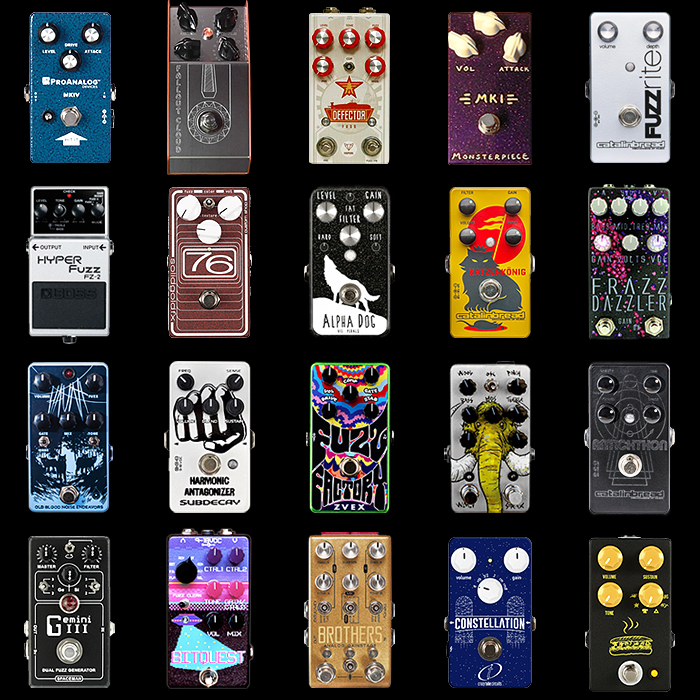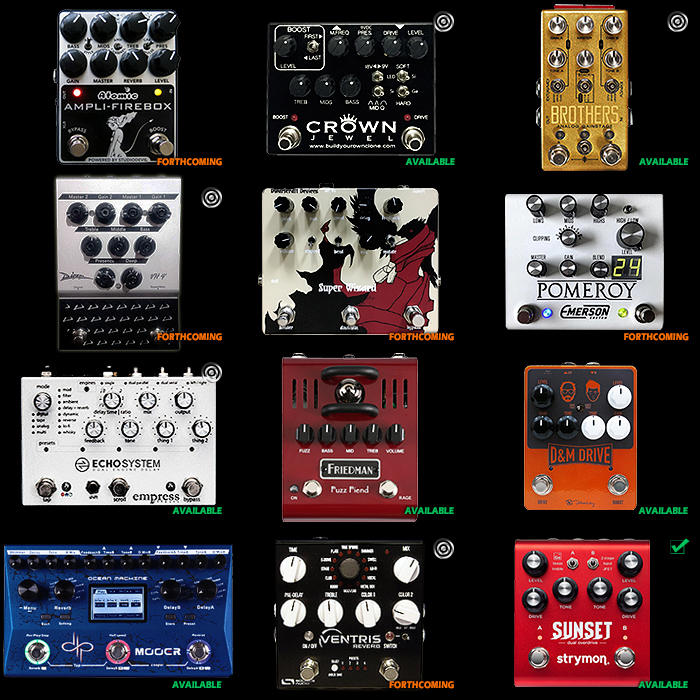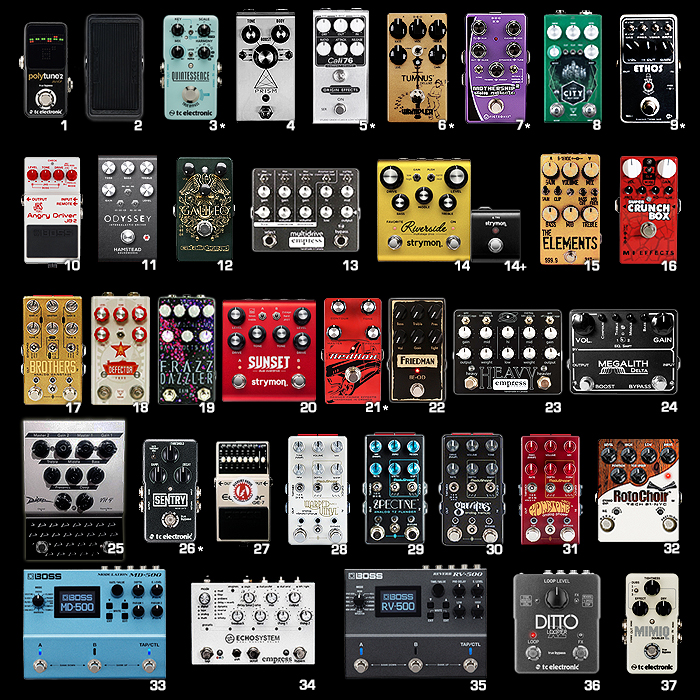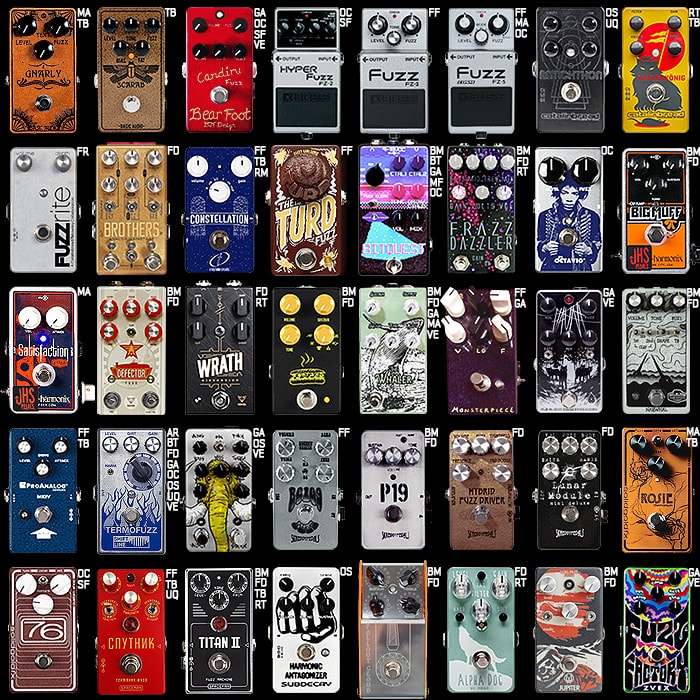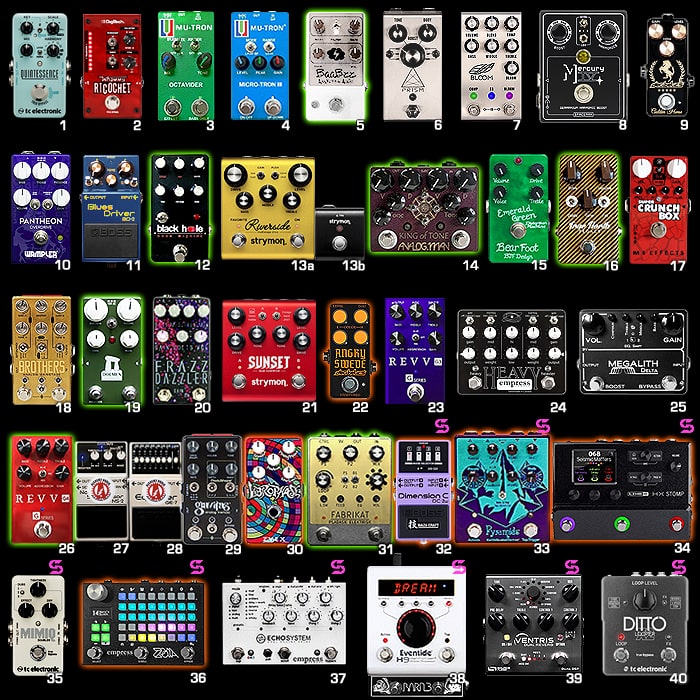Pedal Chain Delight - Tone Quest Phase One Completion
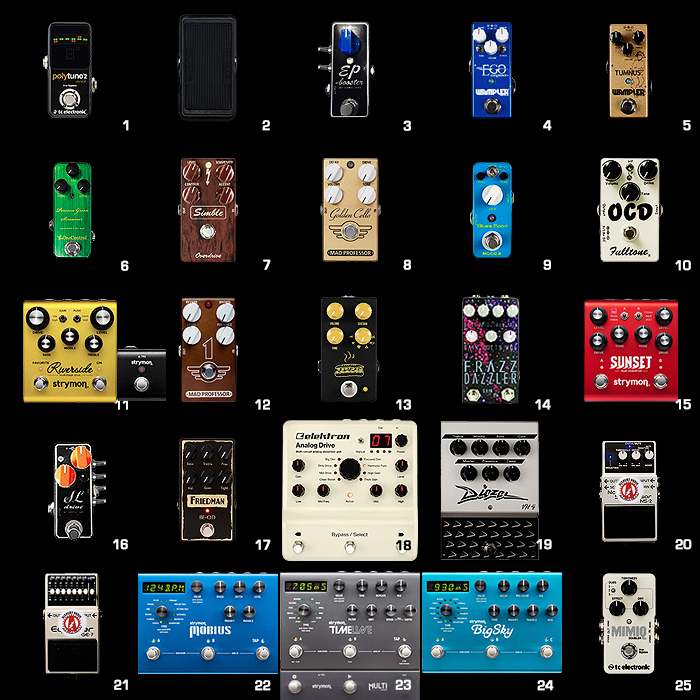
It’s taken a while, lots of trial and error and patience, but I am at a point where I am finally totally happy with my phase one pedal / signal chain. It is essentially a ’vanilla’ chain of classic sounds - overdrives, fuzzes and distortions, and mostly regular effects. It possibly goes a little broader and deeper than some - but generates largely mainstream sounds - covering the whole gamut of genres from barely their breakup warmth to full ferocious distortion - from pop through all shades of rock and onto djent therefore. My guitar of choice is my PRS Classic Electric, preferred pick is a Hawk TB7, Wireless Line 6 G-10, and all goes into a stereo amp rig with Boss Katana 100 on left channel and Carvin V3MC on the right. The whole signal chain goes into the front of both amps with effects split in stereo - and the Mimiq Doubler further enhancing the soundstage separation.
My key considerations here include usefulness, versatility and footprint, but the overwhelming factor is one of sound quality / tone. I quite like the smaller pedals, but will not sacrifice sound quality for footprint or versatility, The ideal pedal is one with alternative voices and in a fairly small package - I do try to stear clear of the really big vintage-type pedals - and if I can get away with a smaller form factor - so much the better. A lot of the time you can sacrifice certain qualities for size, but definitely not for the small pedals I have ended up with - each and every one of them sounds amazing and easily the equal of their bigger siblings.
I’m going to live with this particular arrangement for a while now - until I’ve wrung every last possible sound from every single one of these pedals. There are 25 in the above picture, I also have a Dunlop Volume (X) Mini which I use as an expression pedal for a variety of those 25.
The overwhelming significance here is the number of overdrive / fuzz / distortion pedals - which amazingly all produce different high quality sounds. I am hoping that Strymon produces a big style presets pedal for multiple overdrives and distortions - a la BigSky / TimeLine - that will then allow me to shorten / swap out the chain somewhat, as it stands currently it is sound-wise at least nigh on perfect.
Note - for Settings o’c = o’clock, where dials are viewed as clock faces
1 : TUNER (Utility) : TC Electronic PolyTune 2 Noir [44mA,9V]
A very popular small tuner - found on numerous pro pedalboards - gives you a quick overview of all strings simultaneously from one strum - to get you tuned up just that little bit quicker. LEDs are bright, but could be brighter still, but all in all this is a great tuner which I don’t see myself swapping out any time soon.
Had I not gone for the PolyTune 2, I might have selected the Sonic Research ST-300 Mini or Korg Pitchblack Poly. Many pros also have a preference for the Boss TU-3 and the Peterson Stomp Classic.
2 : WAH (Modulation) : Dunlop Crybaby Mini Wah [0.9mA,9V]
I actually started off here with the Digitech Whammy Ricochet [235mA,9V] which is a great pedal in its own right - but is more suitable for Tom Morello style pitch shifting acrobatics, and does not really approximate wah style tones. So now this slot is occupied with the wonderful Crybaby Mini whose tone I love.
I initially thought that doing the rocker motion with the foot would be too much of an inconvenience, but I actually quite like it, and I love the effects you can produce. Would be cool to see a more traditional sounding wah effect in a DigiTech momentary button style!
I quite like the look of the Wilson Effects Mini Q-Wah which looks to provide some extra features over the CryBaby, and also the forthcoming DigiTech FreqOut - which I would alternate in this slot. If I ever decide to go auto-wah, then the Mad Professor Snow White would be my choice, other interesting wah alternatives include the mini Mooer Wahter Wah and the AMT WH-1 Wah.
[Settings - I have the internal dip switch set to L - Low]
3 : BOOSTER (Utility) : Xotic EP Booster Alchemy Audio Mod [5mA,9V]
I started here with the excellent TC Electronic Spark Mini Booster [40mA,9V], then updated to the slightly more versatile Xotic EP Booster - before finding my way to the Alchemy Audio custom modded version with the externalised dip switches - for more versatile control. Both boosters have been set to on at all times and add a gorgeous warmth and width to the core sound.
Alternatives I could have selected include the Keeley Mini Katana Boost, the Fulltone 2B Booster or the JHS Prestige Booster. As it stands though I really love the Xotic EP, and I am unlikely to change this any time soon.
[Settings - Gain : 10 o’c | Voicing : both dips / toggles set to up]
4 : COMPRESSOR (Utility) : Wampler Mini Ego Compressor [14mA,9V]
My first compressor was the Xotic SP Compressor / Alchemy Audio Mod [5mA,9V] an excellent compressor with a pretty neutral impact to tone. Yet for some reason I prefer the Wampler - it somehow feels easier to dial things in with the Wampler and it somehow sounds just a touch better to me. I could also have picked the Pigtronix Philosopher’s Tone Micro which I quite like the look of, but I am really very happy with the Mini Ego for now - will probably stick with this unless something more versatile comes around.
Other notable alternatives include the MXR Dyna Comp Mini and the Fairfield Accountant Compressor.
[Settings - Blend : 10 o’c | Sustain : 2 o’c | Volume : 12 o’c | Tone: Neutral | Attack : Slow]
5 : OVERDRIVE : Wampler Tumnus Overdrive (Klon Clone) [20mA,9V]
’That Pedal Show’ put me onto this - I agree with Dan in preferring the subtle addition of low end frequencies vs the original and many of the near matches. I also have the Electro-Harmonix Soul Food + JHS Mod version [22mA,9V] - but the Tumnus just sounds better across all my pickup settings tapped or otherwise.
For another mini pedal, the Tone City Bad Horse is pretty good, and many pros rate the J Rockett Archer, Klon KTR Centaur and the RYRA Klone. For me though - I really love the Tumnus voicing, and am unlikely to swap it out from this slot.
[Settings - Gain : 2 o’c | Treble : 1 o’v | Volume : 9 o’c]
6 : OVERDRIVE : One Control Persian Green Screamer (Tube Screamer Clone) [3mA,9V]
My first ’Tube Screamer’ was actually the 4-dip-switch-voiced Keeley Red Dirt Mini [7.5mA,9V], which I then swapped out with the Ibanez Tube Screamer Mini (7mA), before coming across the dual-voiced One Control Persian - which I love in its slightly louder and crisper ’Modern’ voicing.
Alternatives here include of course originals - Ibanez TS-808, Maxon OD-808, and if size and price matter - the Mooer Green Mile also does a pretty decent job. I currently can’t see myself moving away from the Persian at the moment - it sounds amazing - particularly on the bridge pickup.
[Settings - Level : 2 o’c | Tone : Full | Drive : 3 o’c | Voicing : Modern]
7 : OVERDRIVE : Mad Professor Simble (Dumble OS Clone) [10mA,9V]
Like many, I have watched several videos of the Dumble Overdrive Special amp and love that smooth very slightly fuzzy organic tone. Once again ’That Pedal Show’ was instrumental in shaping my choice here - in the end it was between the Simble and the J Rockett Dude - the Simble won out for me by the tiniest of margins - I would have been content with either, but really love the Simble and would not swap for anything else.
I am still considering acquiring the recently released One Control Acorn OverDrive Special [3mA,9V] which has the advantage of a smaller form factor, other possible alternatives include the LovePedal Hermida ZenDrive - which the pros seem to love, or the Mooer Rumble Drive for those on a tighter budget.
[Settings - Level : 2 o’c | Sensitivity : 1 o’c | Contour : 2 o’c | Accent : 1 o’c]
8 : OVERDRIVE : Mad Professor Golden Cello [43mA,9V]
Quite a unique pedal which has unique Cello / Violin overtones - great for solo and individual note articulation, less so for chords. Has a lovely sing-song melodious quality, but often needs tempering through turning down the guitar tone dial.
Other alternatives I have considered for swapping out this slot include the Mad Professor Sweet Honey Overdrive Deluxe, Bizarre Engineering Violine Distortion or the LovePedal Amp Eleven. For now though the Golden Cello is pretty safe!
[Settings - Delay : 10 o’c | Drive : 3 o’c | Volume : 3 o’c | Tone : 10 o’c]
9 : OVERDRIVE : Mooer Blues Mood (Keeley Modified Boss Blues Driver Clone) [14mA,9V]
My cheapest pedal is also frequently the one most used. It has a dual voicing, I prefer the ’Fat’ option obviously - sounds great on all pickup combinations - a wonderful fat, warm rock sound. This one’s a keeper!
Alternatives for this slot include Keeley Super Phat Mod, Keeley Katana Blues Drive and Wampler Dual Fusion, but all are unlikely to get a look-in any time soon.
[Settings - Voicing : Fat | Level : 12 o’c | Tone : 12 o’c | Gain : 2 o’c]
10 : OVERDRIVE : Fulltone OCD [7mA,9V]
A very difficult pedal to clone - although there are plenty of those, including the pretty awesome Mooer Hustle Drive [6mA,9V], the OCD is just extra special with some really lovely crackly distortion artifacts. Digital pedals in particular struggle to replicate this analogue circuit.
As conceivable alternatives for this slot - I would like to acquire the Fulltone Plimsoul at some stage, as well as the JHS Andy Timmons and One Control Lingonberry OverDrive - all of which sound slightly different to the OCD, but would be complimentary swap-outs.
For now it is totally understandable why the OCD is held in such high regard by most - it is truly a unique and wonderful sounding overdrive, those that don’t like it find it a slight too ’dirty’ and ’noisy’ which are exactly the same reasons most people love it.
[Settings - Voicing : HP | Volume : 10 o’c | Drive : 3 o’c | Tone : Full]
11 : MULTIDRIVE : Strymon Riverside (Amp-like Overdrive and Distortion) [250mA,9V]
A much maligned and misunderstood pedal, and not without its faults, but genius if you understand what it is about. Actually a fairly neutral 4-cascading-gain-stage overdrive pedal configured to replicate the natural distortion of a valve amp. In this case the first stage is an analogue JFET circuit, which is then ramped up by degrees via Digital Signal Processing. You also have 3 EQ dials to sculpt the sound as well as two voicings and a mid-boost toggle. You don’t get the raw crackle of analogue distortion, but you do get a fairly throaty roar up through the gears - via Strymon’s ingenious infinite sweetspot algorithm - which makes the pedal sound great pretty much however you dial it in. It is great for those more polished 80’s overdrives and distortions, but sounds just a touch too clean for many.
I actually really like its versatility and how easy it is to dial in a great sound. Similar digital equivalents include the Source Audio LA Lady and the very recent Positive Grid Bias Distortion. I also use a single Strymon Mini Switch which I alternate currently between use as a boost on the Riverside, or a favourite switch on the Sunset (qv).
[Boost Voicing - Drive : 12 o’c | Gain : low | Push : norm | Level : Full | Bass : 10 o’c | Middle : 10 o’c | Treble : 12 o’c]
[High Gain Voicing - Drive : Full | Gain : high | Push : norm | Level : Full | Bass : Full | Middle : Scooped | Treble : Full]
12 : DISTORTION : Mad Professor 1 (EVH / 5150 / Brown Sound Clone) [82mA,9V]
My first ’Brown Sound’ pedal was the mini One Control Anodized Brown [4mA,9V], which was serviceable, probably great in a band mix, but did not have sufficient low-end for home-playing. It never quite sounded right for me. Far more impressive is the Mad Professor 1 which allows you to dial in a pretty decent 80’s style Eddy Van Halen sound.
If you don’t mind the larger form factor, you can’t go wrong with the MXR EVH 5150 OD or the Wampler Pinnacle Deluxe - the latter of which is the most versatile in this category.
[Settings - Reverb : 11 o’c | Brown : 11 o’c | Level : 2 o’c | Presence : 11 o’c]
13 : FUZZ : JHS Muffaletta Fuzz (Electro-Harmonix Muff Clones) [100mA,9V]
I started off with the really versatile mini EWS Little Fuzzy Drive - which is awesome for a small pedal, probably just slightly ahead of the almost equally impressive One Control Baltic Fuzz. Yet the JHS Muffaletta trounces all-comers pretty much by offering no less than 6 different EHX Muff voicings - Civil War, Russian, Pi, Triangle, Rams Head and JHS 2015 variation. I use the 1st, 4th and final options a lot - all sound amazing.
Other possible alternatives include Tone City Fuxx Fuzz, ZVex Fuzzolo, Rainger FX Freakenstein, Mini Fuzz Face and Ibanez 850 Fuzz Mini.
[Settings - Volume : 4 o’c | Sustain : 12 o’c | Tone : 11 o’c : Preferred Voicings : Civil War, Triangle, JHS]
14 : FUZZ : Dr Scientist Frazz Dazzler (ProCo Rat Clone) [50mA, 9V]
Strictly speaking, the Frazz Dazzler is not a direct Rat Clone, it is something slightly more, with quite a bit more versatility, but its combination of outrageous crackling fuzz with an additional gain switch, allows you to achieve Rat Tones quite easily.
I started off with the Mooer Black Secret [3mA,9V] then the Alchemy Audio built BYOC Li’l Mouse [7.5mA] an exact Rat clone using the same OpAmp circuit. Yet I was so dazzled by Dennis Kayzer’s demo of the Dazzler that I went for that instead. You get 7 dials to twiddle and two footswitches for infinitely finer control and more variety. For me this is a perfect Rat substitute with a whole load more to offer.
For the vintage-minded the slightly larger format Rat is still available in various guises - 2, Fat etc. and for the more adventurous there is the Chase Bliss Brothers Analog Gain stage which mixes up two channels of 3 different overdrive, fuzz and boost circuits - that can be arranged both ways in series or in parallel - for almost infinite sound sculpting. The Chase Bliss pedals are pricey, but usually worth it. I may consider the Brothers pedal as a replacement / active alternative at some stage. For now though I am really happy with my fuzz contingent, which strictly sits more in the fuzz distortion camp, but you can dial down both pedals quite easily for more 70’s style original fuzz vibes.
[Settings - Bass : 3 o’c | Mid : 12 o’c | Treb : 3 o’c | Mix : Full | Gain : 2 o’c | Volts : 3 o’c | Vol : 3 o’c]
15 : MULTIDRIVE : Strymon Sunset Dual Overdrive [250mA,9V]
Strymon’s newest multidrive / dual drive pedal is preferred by most over the Riverside, although they have quite different core strengths. The Sunset has two channels of two overdrives plus boost. The pedal’s guts are similar to the Strymon in having a first-stage analogue JFET transistor circuit, but the DPS works quite differently - and happily can give you a slightly ’dirtier’ sound. The left hand channel consist of simulated Germanium diode, then ’Texas’ soft clipper with mid boost (Tube Screamer) and finally a variable treble booster. While the right hand channel is 2 Stage soft>hard clipping, then single hard clipping and finally a JFET boost stage. In effect the left hand side is more treble-y, and the righ side is more bassy - so they perfectly complement each other. You can run both channels both ways in series or in parallel. The Chase Bliss Brothers works very similarly with the second stage being a fuzz option rather than overdrive.
The original pedal in this slot was the mighty versatile Pigtronix Micro Disnortion [34mA,9V] with 5 serial/parallel clipping stages, which is though somewhat outplayed by the Strymon Sunset, but otherwise a perfect replacement for a smaller board. Other potential alternatives here are the Emerson Custom Pomeroy Dual Overdrive and the Dr Scientist The Elements.
As mentioned under Riverside I currently share a single Strymon Mini Switch across the two overdrive pedals - where here it provides a useful ’favourite’ switch - allowing you to set up two separate pedals in effect with 6 easily foot-switchable voicings.
[Settings A - Level : 1 o’c | Voicing : texas | Drive : 1 o’c | Tone : 1 o’c]
[Settings B - Level : 1 o’c | Voicing : 2 stage | Drive : 12 o’c | Tone : 12 o’c]
[Series / Parallel : B>A]
16 : DISTORTION : Xotic SL Drive Alchemy Audio Mod (Marshall Super Lead Plexi Clone) [10mA,18V]
Everyone should have a Marshall Plexi clone to reproduce those rich 70’s rock sounds, and the Xotic SL drive sounds amazing at 18V - particularly in the Alchemy Audio mod version with externalised dip switches for toggling between the 4 voicings.
I also have the One Control Purple Plexifier [3mA,9V] which is also excellent but a little less versatile, and I could have gone for any of Tone City Golden Plexi, LovePedal Purple Plexi or Wampler Plexi Drive Deluxe - which run the different sizes of footprint but are all capable of great plexi tones.
[Settings - Drive : 2 o’c | Tone : Full | Volume : 2 o’c | Voicing : all 4 dips / toggles set to up]
17 : DISTORTION : Friedman BE-OD (Heavy Marshall Plexi Clone) [25mA?,9V]
This is a great Heavy Rock / Hard Rock / Lighter Heavy Metal pedal - it has significantly more gain than the Xotic SL Drive, and has an amazing ’Tight’ control dial which allows you ramp up your note definition and attack.
Alternatives here are the slightly less gain forthcoming Friedman Dirty Shirley pedal, as well as the more gain - Keeley Filaments and Seymour Duncan Palladium.
[Settings - Bass : Full | Treble : 12 o’c | Pres : 11 o’c | Vol : 1 o’c | Gain : 3 o’c | Tight : Full]
18 : MULTIDRIVE : Elektron Analog Drive (8 separate analogue circuits) [400mA,12V]
As mentioned in previous posts, I acquired this pedal soon after the Strymon Riverside, being somewhat disappointed that the Riverside did not exactly replicate / replace any of my existing analogue pedals. I had hoped that the Riverside was more like the Elektron Analog Drive - particularly with regards to the ability to foot-switch between 100 presets.
The Elektron is actually a pretty decent all-rounder, it has its own Klon and Tube Screamer -alike circuits, has a usable Plexi-style circuit, a couple of slightly odd, but eminently usable Fuzz voicings and a couple of heavier rock voicings, which don’t go quite as hard or heavy as the Friedman BE-OD, and nowhere near the Diezel VH4 pedal.
Of all the Overdrive / Distortion pedals, this one is probably the most likely to be swapped out - because all the sounds dialled in here are more in-between sounds, and not at all replacements for any of my existing favourites.
I am hoping that Strymon eventually produces something that can swap this one out, in the meantime the Empress Multidrive / Heavy and Dr Scientist Molecular Overdrive provide suitable analogue alternatives.
[Settings - Various, preference for Mid Drive, Big Dist and Focused Dist voicings]
19 : DISTORTION : Diezel VH4 MK1 Pedal (replicates Channel 3 of Diezel VH4 amp) [400mA?, 12V]
My heaviest pedal - for Death-, Thrash- and Djent Metal - sounds gloriously electrostatically charged - the ’Deep’ feedback / filter element is the magic ingredient here. I can’t understand how many dislike this pedal - it sounds amazing into the front of my dual amp setup.
A 2 Channel version of this (Mk II) was announced at NAMM earlier in the year - adding the famous 4th Channel of the VH4 amp for even more gain. That pedal has still to fully materialise in the stores, even though it was announced as ready for retail back in January - possibly they are trying to clear older stock before they launch. I will definitely be getting that one when it finally appears.
I also really like the sound of the Wampler Dracarys, which I am almost definitely adding at some stage in the future. The Wampler Triple-Wreck is also awesome, as are the Goosoniqueworx Kult and Amptweaker FatMetal Pro.
[Settings - Treble : 4 o’c | Middle : Scooped | Bass : Full | Gain : 2 o’c | Master : 2 o’c | Presence : 2 o’c | Deep : 2 o’c]
20 : NOISE GATE (Utility) : Boss NS-2 Noise Gate Alchemy Audio Mod [20mA,9V]
I started with an original Boss NS-2 Noise Gate, before then trying an ISP Decimator II G-String - which somehow did not really work out for me. I then came across Alchemy Audio and acquired an even higher spec modified Boss NS-2 which is now a constant feature of my chain - could not be without it. Interestingly the ISP Decimator is the only pedal I have ever returned - possibly more my fault than theirs, but the Boss just works perfectly for me somehow - I run the chain in two loops through this pedal - with the noisier pedals all going though the second stage loop.
Handy alternatives include the TC Electronic Sentry and MXR M135 Smart Gate.
[Settings - Threshold : 3 o’c | Decay : 3 o’c | Mode : Reduction]
21 : EQUALIZER (Utility) : Boss GE-7 EQ Alchemy Audio Mod [7mA,9V]
A similar story to the NS-2 in that I started with plain vanilla Boss before upgrading to Alchemy Audio modded version - which sounds even more amazing with no additional noise at all. I mostly use this as a always-on treble booster for the core signal - works really well.
Handy alternatives include the Source Audio Programmable EQ, Empress ParaEQ and the MXR M108 10-band EQ
[Settings - all flat except for - 3.2k @ +5 and 6.4k @ +10]
22 : MODULATION : Strymon Mobius [Autoswell, Bitcrusher, Chorus, Envelope Filter, Flanger, Phaser, Rotary, Tremolo, Vibe etc.] [300mA, 9V]
A fantastic multi-dimensional Modulation pedal, and one that I’m still fully coming to terms with - I use a variety of existing presets here - in particular Tremolo, Flanger, Phaser and Vibe. I have yet to program my own presets - that moment will come.
It took a lot of research before I settled on Strymon - mostly because I like the idea of footswitchable presets and that all the functionality is fully baked-in and fully available from the pedal - without the need to use a secondary mobile app for changing and updating core settings.
As this is a multi-tasker, even though all modulation engines are exceptional, it goes without saying that you can get individually more versatile and more configurable separate effects. I still have my eye on separate Strymon Rotary and Tremolo pedals in the guise of the Lex and the the Flint.
There are lots of alternatives here - the direct swap out is something like an Eventide Modfactor or Empress Nebulus. The TC Electronic NM-1 Nova Modulator also looks excellent as to the individual Chase Bliss Flanger, Phaser and Tremolo Pedals, namely - Spectre, Wombtone and Gravitas.
[Settings - Various; 5 favourite presets = What Have I Done, Castle Grayskull, Fat Phase, Ripple, Rapid Hrt Beats]
23 : DELAY : Strymon TimeLine [Analog (dBucket), Digital, Tape, Dual, Pattern, Ice, Reverse etc.] [300mA,9V]
This pedal really comes into its own with a stereo rig - particularly the Dual and Pattern delays, and the dTape sounds awesome too. I use a wide range of presets here - right across the range from clean and subtle to dirty and full on. They mostly sound immense!
As with the Mobius, I am quite familiar with most of the presets now, but have yet to configure my own specifically, don’t currently need them...
I do wonder though if I would have gone for the Source Audio Nemesis had it been available at my time of purchase. I do really love the TimeLine, but the Nemesis is almost equally powerful in a significantly smaller form factor and with easier configurability, yet it is without such a huge number of presets.
Note that I also have the Strymon Multi-Switch attachment of easier control of the TimeLine’s Looper function - which is versatile, but limited to 30 seconds and thus has limited utility.
The Empress Echo System, Eventide Time Factor and Boss DD-500 are obvious swap-outs. While Mooer Ocean Machine (Twin Channel Delay + Reverb) and Chase Bliss Tonal Recall provide you with more specialised alternatives. If you want a smaller form factor, then the TC Electronic Flashback Delay with its 11 delay engines is an excellent regular pedal size alternative.
I am intrigued by the Tonal Recall and Ocean Machine, but more likely to check out the Nemesis at some stage in the future
[Settings - Various; 5 favourite presets = Mellow Digital, Wowywowwowwow, Dirty Bucket, Mirrors, Ice Organ]
24 : REVERB : Strymon BigSky [Room, Hall, Plate, Spring, Cloud, Chorale, Shimmer etc.] [300mA,9V]
A truly amazing and highly versatile reverb pedal - sounds amazing in every respect - I use the full variety of presets and as with the others have yet to dial in my own specific presets. I seem to mostly use the Hall, Spring, Cloud and Shimmer presets - but all are pretty decent.
Again I wonder if I would have gone for the forthcoming Source Audio Ventries Dual Reverb pedal had it been available at the time - much like the Nemesis, it provides amazing functionality in a significantly smaller footprint. That does not mean to say I am not delighted with the BigSky - it’s just that all these big Strymon pedals have a degree of complexity which takes a while to get a handle on.
Obvious swap outs are the Empress Reverb and Eventide Space Reverb. The Neunaber Immerse gives you a simpler and more compact range of functions, while at the opposite scale the Eventide H9 Max Stompbox gives you all of the Eventide effects in a single, relatively small digital pedal. The one downside of the H9 being that you are very reliant on the Eventide App for control. If you are after a smaller form factor, then the TC Electronic Hall of Fame / Arena Reverb with its 10 reverb engines is an excellent regular pedal size alternative.
As it stands I am more than satisfied with the BigSky, but would like to explore the Ventris and H9 at some stage in the future. Some of the Eventide effects are simply too amazing to miss out on - e.g. ’Blackhole Reverb’.
[Settings - Various; 5 favourite presets = Great Hall, Tanked, Epiphany, Orchestral, Warmed Up]
25 : MULTI-TRACKER (Utility) TC Electronic Mimiq Doubler [300mA,9V]
This neat effect significantly thickens your sound and gives wider stereo separation for an even more awesome sounding rig. Note that it only really works successfully with a proper stereo rig.
Other similar effects include alternatives - Strymon Deco, Keeley 30ms Automatic Double Tracker and the Electro-Harmonix PolyChorus. As it stands I am happy with the Mimiq although it was initially problematic in setup and I need to upgrade firmware which was a little bit of a pallaver. All working fine and sounding great now though.
[Settings - Dubs : 3 | Tightness : 1 o’c | Dry : 3 o’c | Effect : 3 o’c]
Some Notes on Pedal Preference
So you may note from the above picture and preceding descriptions that I am a big fan of Strymon pedals. For me they combine the right degree of versatility and functionality with superb professional sounding effects - I love that everything is fully accessible and configurable through the pedal interface alone, and that these pedals are relatively straightforward to dial in a great tone. All Strymon pedals come with additional smarts - secondary dial functions etc. so even though pricey, you really feel like you are getting your money’s worth. All Strymon pedals I own are in the chain. I am keen to acquire more, and the Lex and Flint are at the top of that list, followed by the Deco, Dig and El Capistan.
Next most popular on the list is actually Finnish Prodigy Björn Juhl - who is responsible for pretty much all of Mad Professor’s pedals, as well as the Japanese brand One Control - and I own several of each. Björn is a self-taught pedal sound engineer, and has an excellent ear for tone. Additional Mad Professor pedals I am keen to acquire include the Snow White Auto Wah and Sweet Honey Overdrive Deluxe, while I am also interested in acquiring One Control Baltic Blue Fuzz, Golden Acorn OD and Lingonberry OD.
Third on the list would likely be TC Electronic of which I own several pedals, but currently only use 2. I also have the excellent Spark Mini Booster, MojoMojo OD and Dark Matter Distortion. High on my wishlist is a Ditto X2 Looper, and if I were squeezed for pedalboard space, I would not hesitate to accommodate Flashback Delay and Hall of Fame / Arena Reverb in place of the much larger Strymon alternatives.
Fourth on the list would be Brian Wampler’s eponymous company - I really respect the man and his output. I only have two of his pedals currently, but there are several on my wishlist including the recent Dracarys. If more mini Wampler pedals are forthcoming I am likely to jump on those as well - the quality is always excellent.
There are a number of pedals in equal 5th place, and strangely I kind of saw myself having more Boss and MXR pedals as they both provide really high quality industry standard options for every conceivable eventuality - also at a very reasonable price point. Turns out I am just using a couple of Boss’s - GE-7 and NS-2. Also two Dunlops - CryBaby Mini and Volume (X) mini, 2 Xotic effects - EP Booster and SL Drive, although I also have an SP Compressor in reserve.
Funnily, I should have mentioned Mooer a little higher probably, I have 3 of their pedals, although only one active in the current chain - the excellent Blues Mood. Other singles include Fulltone OCD (also have an eye on their Plimsoul), Dr Scientist Frazz Dazzler (also have an eye on their BitQuest), JHS Muffaletta (Also have an eye on their Andy Timmons), Friedman BE-OD (like look of Dirty Shirley too), then singular stand alones - Diezel VH4 and Elektron Analog.
There are a number of pedal makers I like the look of - but there is of course only so much money and time to go around. I have a couple of EWS pedals which are not currently active on the board, a single Keeley Pedal (there are a number of Keeleys I like the look of - Monterey, DarkSide, Filaments). Of course the options are nigh infinite - and there are always more forthcoming. I am also itching to try a Chase Bliss pedal or two - Gravitas and Brothers in particular.
Phase 2 and Beyond
So the current iteration is a pretty mainstream chain with largely everyday regular sounds. The next phase will be slightly more specialist. I am keen to experiment more with unusual sounds - bitcrushers, pitchshifters and particle delays in particular.
This is the likely next phase hitlist (top 15 - alphabertical), including some additions and swap-outs:
- BYOC Crown Jewel (Multidrive) - A super analogue multi-tasker looks to be able to recreate any kind of drive sound (no presets though)
- Diezel VH4 MkII (Distortion) - A likely imminent forthcoming replacement for the current MK1 pedal with a whole additional gain stage
- DigiTech FreqOut (Modulation) - Seemingly every pro’s favourite new utility pedal for 2017 - feedback on demand, even at lower volumes / saturations
- DigiTech The Drop (Utility) - A great utility for achieving lower tunings while guitar remains in standard tuning or drop-D
- Dr Scientist BitQuest (Modulation - Bitcrusher) - A hugely versatile and capable pedal with several functions including bitcrushing
- Eventide H9 Max Stompbox (Modulation / Pitchshifter / Delay / Reverb) - Expensive but highly versatile full spectrum effects library
- Iron Ether Frantabit (Modulation - Bitcrusher) - The most instantly appealing of the various Bitcrusher pedals available
- Keeley Monterey (All-in-one) - Jimi Hendrix in a box! Pretty much every configuration of Jimi Hendrix’s sounds in a single moderately sized pedal
- McSpunckle Gnomeratron VTF (Fuzz) - The craziest Fuzz pedal out there alongside the ZVex Fuzz Factory 7, this one has slightly more switches and dials and appeals slightly more to me - also quite a bit less pricey
- Red Panda Particle (Modulation / Delay) - Unique delay effects for more ambient sounds
- Singular Sound BeatBuddy Mini (Utility) - A useful play-along utility - may though go for something more versatile - some sort of proper mini drum-machine, needs to be preset-based though
- Strymon Flint (Tremolo + Reverb) - On so many pro boards - the perfect combination of 3 dedicated reverbs + 3 dedicated tremolo voicings
- Strymon Lex Rotary (Modulation) - There are likely better rotary effects out there, but the combined package this delivers is beyond compare
- TC Electronic Ditto X2 Looper (Utility - Looper) - All the TC Dittos are appealing - this one probably the best marriage of function and form factor
- Wampler Dracarys (Distortion) - A companion piece for the Diezel for those really heavy chuggy sounds







